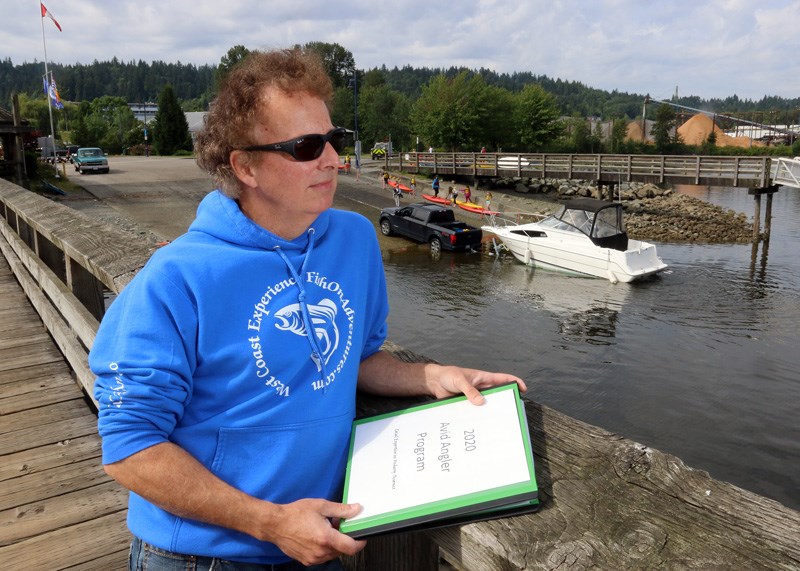A Port Moody fishing guide is turning a slowdown in charters because of the COVID-19 pandemic into an acceleration of conservation efforts for chinook and coho salmon.
Mark Shannon, who’s seen all of his business from cruise ship passengers booking a day on the water before or after their journey run aground, has been using his downtime to assist in a Department of Fisheries and Oceans (DFO) program that takes DNA samples from fish that contribute to a database tracking their origins and migratory patterns. And now that charters are picking up again from local fishers looking to land a big one, he’s enlisting them to pitch in.
Shannon said the effort will allow DFO to better target seasonal openings and closings according to the robustness of various populations.
“It will be more than hope-and-a-prayer type management,” he said.
Since starting his FishOn Adventures charter business three years ago after a long career in software development, Shannon said it’s been a tough go as chinook couldn’t be fished at all last year, and the pandemic has reduced weekly outings on his 24-ft Robalo craft from five to about two.
He said the DNA sampling program is a way to ensure the future of the recreational fishing industry. HIs customers are thrilled to play a role.
“They like the idea of being involved in conservation efforts,” he said. “It’s a positive message.”
More importantly, the little extra work doesn’t detract from the sporting aspect.
When fish are reeled in, the anglers take a small clip from its adipose or coddle fin, and record its length, date and location of catch on an accompanying card that is then submitted to DFO.
Shannon said the information can be critical to determine a real-time picture of a fishery’s health.
“If data’s not available, conservation efforts are made blindly,” he said.
Meanwhile, Shannon remains hopeful that a renewed emphasis on close-to-home tourism will entice more families to unspool lines as far afield as Thrasher Rock, near Gabriola, or Five Fingers Islands, near Nanaimo, for the full 10-hour charter experience, or Howe Sound and the Fraser River’s south arm for shorter expeditions.



